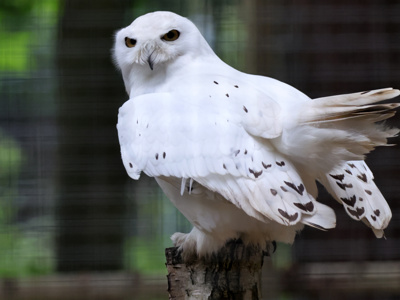
Snowy Owl
Bubo scandiacus
Despite most owls being thought of as nocturnal animals, snowy owls are actually diurnal, being most active from dawn to dusk.
You can often tell what time of day an owl is active from the colour of their eyes, and in the case of the snowy owl their bright yellow eyes tell us that they are out during the day. Snowy owls have suffered a drastic decline in their wild population as a direct result of climate change.
Main threats
Hunting, poisoning and climate change.
Distribution
Northern regions of North America, Canada, Europe and Asia.
Preferred habitat
Mountainous regions
Favourite food
Small birds and rodents
Appearance
Snowy owls are one of the easiest owls to identify, from their mostly white plumage, sometimes with dark spots and bright yellow eyes.
Breeding
5-8 young per year
Description
Lifespan: up to 9 years (in the wild)
Weight: 17kg (males) 22kg (females)
Size: 530-600cm
Family facts
Young snowy owls have heavy dark brown bars on their feathers. Females keep these markings but adult males become almost pure white.
